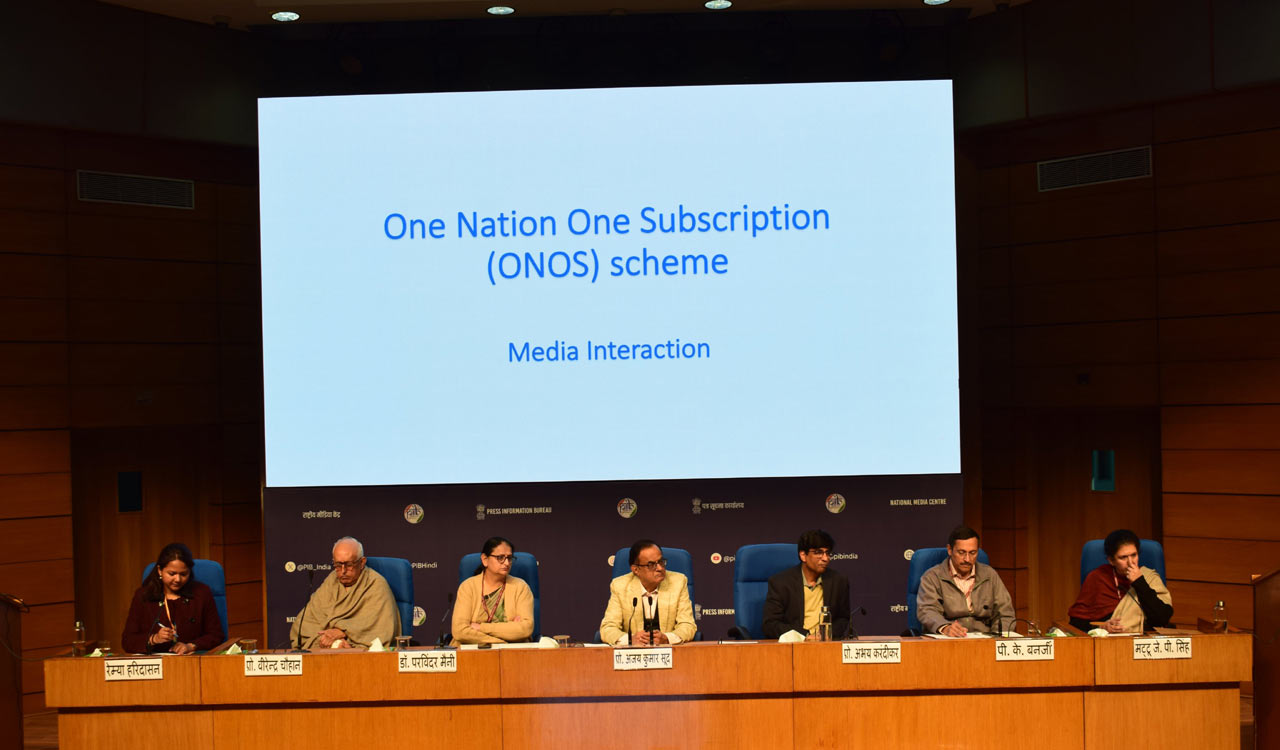Editorial: Helping hand to researchers
While ‘One Nation, One Subscription’ is welcome, India could also look towards embracing Open-Access publishing

Despite being endowed with immense talent and human resources, India lags behind developed countries in academic research and pioneering innovations of global impact. Among the many reasons for this sorry state of affairs is the lack of access to research materials and contemporary publications. Poor spending on research and development (R&D) adds to the woes of young researchers working in various laboratories and university centres. Against this backdrop, the introduction of ‘One Nation, One Subscription’ (ONOS) has the potential to become a game changer as it provides centralised access to academic journals and research articles for institutions, students, teachers and researchers across India. This will not only help democratise access to research but also reduce the cost of journal subscriptions for universities and research institutions. The scheme plans to consolidate subscriptions to major academic journals into a single platform. It will provide access to over 13,000 e-journals from 30 international publishers with a single click, benefiting nearly 6,300 institutions nationwide. According to one estimate, the initiative, if implemented properly, is projected to lower research expenses by 18% and boost research output by 38%. At present, funding shortages pose a significant hurdle for research projects, often leaving researchers reliant on costly subscriptions to international journals. These subscriptions place a heavy financial burden on higher education institutions, adversely affecting the quality of both research and education. By streamlining access to high-quality academic resources and minimising costs, ONOS is expected to transform India’s research ecosystem, fostering a culture of innovation and excellence.
While the initiative will undoubtedly benefit researchers, questions are also being raised about whether it would be prudent for India to invest heavily in a subscription-based model at a time when the global research ecosystem is increasingly embracing Open-Access (OA) publishing. In the subscription model, a journal receives manuscripts from scientists, evaluates them through peer review and accepts or rejects them. Once a paper is accepted, the journal publishes it and makes money by charging people and institutions to access it. On the other hand, OA refers to papers that are published to be freely accessible. Currently, over 53% of all scientific papers worldwide are open access in some way, according to data from Clarivate’s Web Of Science platform. The US Office of Science and Technology Policy has mandated that from 2026, all publicly funded research articles must be freely accessible without any delay. Similarly, Horizon Europe, the European Union’s flagship funding programme, requires peer-reviewed publications resulting from its funding be made freely available online. Considering these moves, in another year a significant fraction of research produced worldwide is likely to be freely accessible to everyone. The scholarly publishing industry is built on publicly funded research. Researchers generate new knowledge, write their findings and perform peer reviews — all without direct compensation from publishers. In the subscription model, these publishers charge exorbitant fees for access.
Related News
-
19-year-old Sam Konstas all set to make Test debut for Australia at MCG
-
Boxing Day Test: Rohit opens up on his batting position, Kohli’s form
-
Watch: Mahabubabad Teacher suspended after parents catch him allegedly showing obscene videos to students
-
Unique discovery at University of Hyderabad: LED Lights to end acid fly infestation in hostels
-
Haiti gang attack on journalists covering hospital reopening leaves 2 dead, several wounded
33 mins ago -
21 dead as Mozambique erupts in violence after election court ruling
51 mins ago -
Cartoon Today on December 25, 2024
8 hours ago -
Sandhya Theatre stampede case: Allu Arjun questioned for 3 hours by Chikkadpallly police
9 hours ago -
Telangana: TRSMA pitches for 15% school fee hike and Right to Fee Collection Act
9 hours ago -
Former Home Secretary Ajay Kumar Bhalla appointed Manipur Governor, Kerala Governor shifted to Bihar
9 hours ago -
Hyderabad: Organs of 74-year-old man donated as part of Jeevandan
9 hours ago -
Opinion: The China factor in India-Nepal relations
10 hours ago




